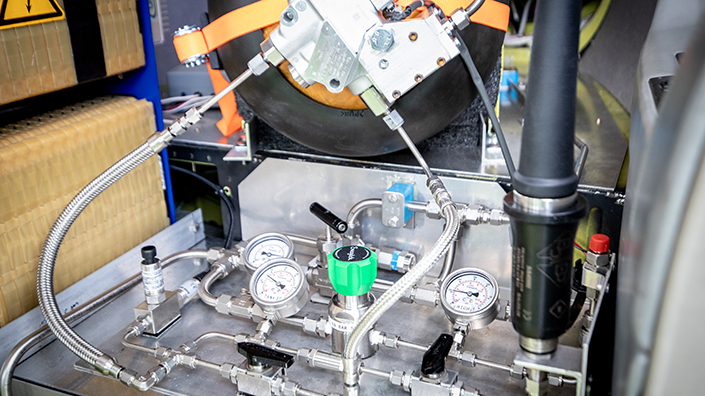Engineering news
ZeroAvia’s converted commercial-grade Piper M-class six-seater flew for eight minutes above Cranfield University’s airport in Bedfordshire yesterday (24 September).
The aircraft reached 1,000 feet (305m) and 100 knots (185km/h) during its flight, ZeroAvia told Professional Engineering. Its 800V emission-free powertrain – which runs hydrogen fuel through a stack to generate electricity – powered the entire flight, including a full pattern circuit over the airfield.

Hydrogen powered the entire eight-minute flight
Aviation minister Robert Courts watched the flight, aimed at demonstrating the viability of the powertrain. It follows a similar achievement in June, in which ZeroAvia achieved another world first with a battery electric flight of a commercial-scale aircraft. The company, based in the UK and US, has an R&D base at Cranfield.
Professor Iain Gray, director of aerospace at Cranfield University, said: “This is a momentous day for the aerospace and the aviation industry. Arguably, this is as big a moment in aerospace as any in the last 75 years, comparable with the first flight of the jet engine.
“Thanks to ZeroAvia, it is fantastic to see the UK leading the world in moves to zero-emission aviation and this could be the start of the UK leading the world in a new generation of hydrogen aircraft. We are tremendously proud that ZeroAvia has chosen to develop their technology at our global research airport and we look forward to continuing to support their efforts.”
Rob Abbott, director of aviation operations at Cranfield University, said: “All of us at Cranfield Airport are proud to have supported the world’s first hydrogen powered commercial-grade aircraft flight by ZeroAvia. This marks another momentous occasion for the airport and demonstrates further our commitment to innovation.”
Hydrogen aircraft also made headlines earlier this week, as Airbus revealed not one but three separate concepts. The European multinational hopes the planes, known collectively as ZEROe, could be in service by 2035.
Want the best engineering stories delivered straight to your inbox? The Professional Engineering newsletter gives you vital updates on the most cutting-edge engineering and exciting new job opportunities. To sign up, click here.
Content published by Professional Engineering does not necessarily represent the views of the Institution of Mechanical Engineers.